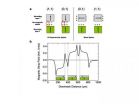(Press-News.org) Athens, Ga. – Dog owners and veterinarians have long relied on a mix of limited data and anecdotal evidence to assess which breeds are at risk of dying from various conditions, but a new University of Georgia study provides a rare and comprehensive look at causes of death in more than 80 breeds.
The study, published in the current edition of the Journal of Veterinary Internal Medicine, can be used to create breed-specific health maintenance programs and is a starting point for future studies that will explore the genetic underpinnings of disease in dogs.
"If we can anticipate better how things can go wrong for dogs, we can manage their wellness to keep them as healthy as possible," said study co-author Dr. Kate Creevy, an assistant professor in the UGA College of Veterinary Medicine.
Creevy and her co-authors examined data from the Veterinary Medical Database to determine the cause of death for nearly 75,000 dogs over the 20-year period of 1984 through 2004. They classified the deaths by organ system and disease process and further analyzed the data by breed, age and average body mass. Eighty-two breeds are represented in their study, from the Afghan hound to the Yorkshire terrier.
While some of the findings corroborate smaller, breed-specific studies, the UGA researchers also found plenty of surprises. Toy breeds, such as Chihuahuas and Maltese, are known to have high rates of cardiovascular disease (19 and 21 percent of deaths within the breeds, respectively), for example, but the researchers found that Fox Terriers also have high rates of cardiovascular disease (16 percent of deaths). Golden retrievers and boxers are known to have high rates of cancer (50 and 44 percent of deaths, respectively), but the researchers found that the Bouvier des Flandres actually has a higher death rate from cancer (47 percent) than the boxer.
Creevy noted that the previously unknown high risk of cancer in the Bouvier, a relatively rare breed, highlights the power of their comprehensive approach.
"With rare breeds, an individual veterinarian may not see enough cases to be able to develop the opinion on whether the breed has a high incidence of conditions such as cancer," Creevy said. "But if you analyze records that have been compiled over 20 years, you can detect patterns that you wouldn't otherwise notice."
Study co-author Daniel Promislow, a genetics professor in the UGA Franklin College of Arts and Sciences, said the study may help solve one of the great enigmas of canine health. "Normally, if you compare different species of mammals, big ones live longer than little ones—elephants live longer than mice, and sheep are in the middle, for example—and that pattern holds pretty well across hundreds of different species of mammals," Promislow said. "Within dogs, the opposite occurs; the little dogs live longer."
The researchers found that larger breeds are more likely to die of musculoskeletal disease, gastrointestinal disease and, most notably, cancer. Smaller breeds had higher death rates from metabolic diseases, such as diabetes and Cushing's disease.
Promislow said dogs are an ideal species in which to explore the genetic basis of disease. There's an unparalleled degree of diversity among breeds—compare Chihuahuas to Great Danes, for example—yet all dogs are of the species Canis lupus familiaris. Within breeds, on the other hand, dogs are genetically very similar.
Scientists first mapped the dog genome in 2003 and have since compiled data on genetic variation at single points on the genome for more than 80 breeds. By combining the genetic data with the data from their study, the UGA team can search for genes that influence the risk of diseases such as cancer.
Promislow pointed out that because the building blocks of the dog genome and the human genome are the same, understanding the genetic basis of disease in dogs can inform human medicine. If specific genes are found to play a significant role in Cushing's disease in dogs, for example, scientists can assess whether the same process occurs in humans with the disease, with the ultimate goal of creating new strategies for early diagnosis and subsequent treatment.
"Is genetic variation for disease due to a few genes that vary in the population and have a big effect or dozens or hundreds of genes with small effects? That's a basic biological question that we can address," Promislow said. "There's potential to learn a lot about the genetics of disease in general using the dog as a model."
Promislow approached Creevy with the idea of collaborating after acquiring gigabytes of data that required a veterinarian's expertise to analyze. Much of the initial data analysis was performed by former veterinary internal medicine resident Jamie Fleming, who is now in private practice in Port Washington, Wis.
Creevy noted that Promislow's background in evolutionary biology allows the team to explore questions that have implications far beyond veterinary medicine. She also pointed out that their collaboration underscores the potential of interdisciplinary research. "This study is a good example of the unique things that can happen at a research university," Creevy said.
INFORMATION:
Landmark study reveals breed-specific causes of death in dogs
2011-04-20
ELSE PRESS RELEASES FROM THIS DATE:
The National Trust Reveals 'Lost' Maze at Cliveden
2011-04-20
The National Trust has revealed a 'lost' maze in the gardens at Cliveden in Buckinghamshire that disappeared for over half a century and has now been re-created using over 1,000 two metre (six feet six inches) high yew trees.
The fully-fledged maze is based on one that was built for Lord Astor in 1894 but had ceased to be maintained since the mid-1900s.
The new maze, a horticultural project on a scale rarely seen these days, has taken two years to create, using over 1,000 metres of steel edging and 120 tonnes of gravel to produce 500 metres of path over one third ...
Green environments essential for human health
2011-04-20
Research shows that a walk in the park is more than just a nice way to spend an afternoon. It's an essential component for good health, according to University of Illinois environment and behavior researcher Frances "Ming" Kuo.
"Through the decades, parks advocates, landscape architects, and popular writers have consistently claimed that nature had healing powers," Kuo said. "But until recently, their claims haven't undergone rigorous scientific assessment."
Kuo is also the director of the Landscape and Human Health Laboratory at the U of I and has studied the effect ...
easyJet Holidays Asks How Flexible Are You?
2011-04-20
easyJet Holidays, has announced the launch of the 'How Flexible Are You?' competition on its holiday offering's blog.
This easyJet Holidays alliance which was established following a collaboration between easyJet and the Lowcosttravelgroup, provides customers with the choice and flexibility to enable them to tailor their holidays and city breaks to travel when they want, to wherever they want, for as long as they want. In light of this, and the recent heroics from the contortionist Rubber Richie, who managed to squeeze himself into a suitcase in London, the team has ...
Ernest Jones Launches New Facebook Page
2011-04-20
Ernest Jones has launched a Facebook page allowing the high street jewellery brand to create a more interactive and personal relationship with its customers. By offering exclusive Facebook competitions and up to the minute trend stories that are not on the current website, Ernest Jones is allowing consumers into an exclusive group. In return Ernest Jones will incentivise consumers with competitions to share their comments and ultimately improve the relationship between retailer and consumer.
The current Ernest Jones retail website features seasonal promotions such as ...
MU researchers find missing link in plant defense against fungal disease
2011-04-20
Botrytis bunch rot, a disease caused by the fungal pathogen Botrytis cinerea, can devastate grape vineyards. Yet other plants can repel the invader and protect themselves by mounting a form of chemical warfare against the fungi through the production of antimicrobial substances, called phytoalexins.
Scientists at the University of Missouri report on a discovery in a key component in the signaling pathway that regulates the production of phytoalexins to kill the disease-causing fungus Botrytis cinerea.
"When the mustard plant Arabidopsis detects the fungus Botrytis ...
Spring-cleaning the mind?
2011-04-20
Montreal April 19, 2011 – Lapses in memory occur more frequently with age, yet the reasons for this increasing forgetfulness have not always been clear. According to new research from Concordia University, older individuals have reduced learning and memory because their minds tend to be cluttered with irrelevant information when performing tasks. Published in The Quarterly Journal of Experimental Psychology, these findings offer new insights into why ageing is associated with a decline in memory and may lead to practical solutions.
"The first step of our study was to ...
Pokercheck.com Reports on Pokerstars Shutdown - Pokerstars No Longer Accepting US Players
2011-04-20
As of April 15, 2011 Pokerstars has shut down to US players. They are still in full operation for non-US players at their Pokerstars.eu domain. However, if you attempt to visit their .com domain you will find a US DOJ and FBI seal along with a message regarding the seizure of the pokerstars.com domain. Regarding the recent events, Pokerstars has released the following statement:
"We are reaching out to you in light of the recent developments in relation to our US business, following which PokerStars does not offer its services to US residents. Please note that ...
'3-D towers' of information double data storage areal density
2011-04-20
College Park, MD (April 19, 2011) -- Using well-known patterned media, a team of researchers in France has figured out a way to double the areal density of information by essentially cutting the magnetic media into small pieces and building a "3D tower" out of it.
This greatly enhances the amount of data that can be stored in a magnetic storage device and provides a method to reach beyond a wall of physical limits that the currently used technology is hitting. The team presents their findings in the American Institute of Physics' Journal of Applied Physics.
"Over the ...
ZyLAB Introduces the First eDiscovery Software System to Search Audio; Attorneys and Investigators Can Pinpoint the Relevant Evidence in Sound Files in Just Seconds
2011-04-20
ZyLAB, a leading eDiscovery and information management technology company today announced the release of its state-of-the-art ZyLAB Audio Search Bundle, a desktop software product used to quickly identify relevant audio clips from multimedia files and from ubiquitous business tools such as fixed-line telephone, VOIP, mobile, and specialist platforms like Skype or MSN Live. The intuitive software enables technical and non-technical users involved in legal disputes, forensics, law enforcement, and lawful data interception to search, review and analyze audio data with the ...
Researcher to present discoveries on medical uses of ultrasound to London's Royal Society
2011-04-20
Jamie Tyler, assistant professor in the Virginia Tech Carilion Research Institute and the Virginia Tech-Wake Forest University School of Biomedical Engineering and Sciences, has been invited to speak at a Royal Society of London high level workshop on May 11-12 on the security implications of advances in neuroscience.
The workshop is part of a four-part policy study on neuroscience and society called Brain Waves. This third module, entitled Neuroscience, conflict and security (http://royalsociety.org/brainwaves-security/), focuses on the international security implications ...


